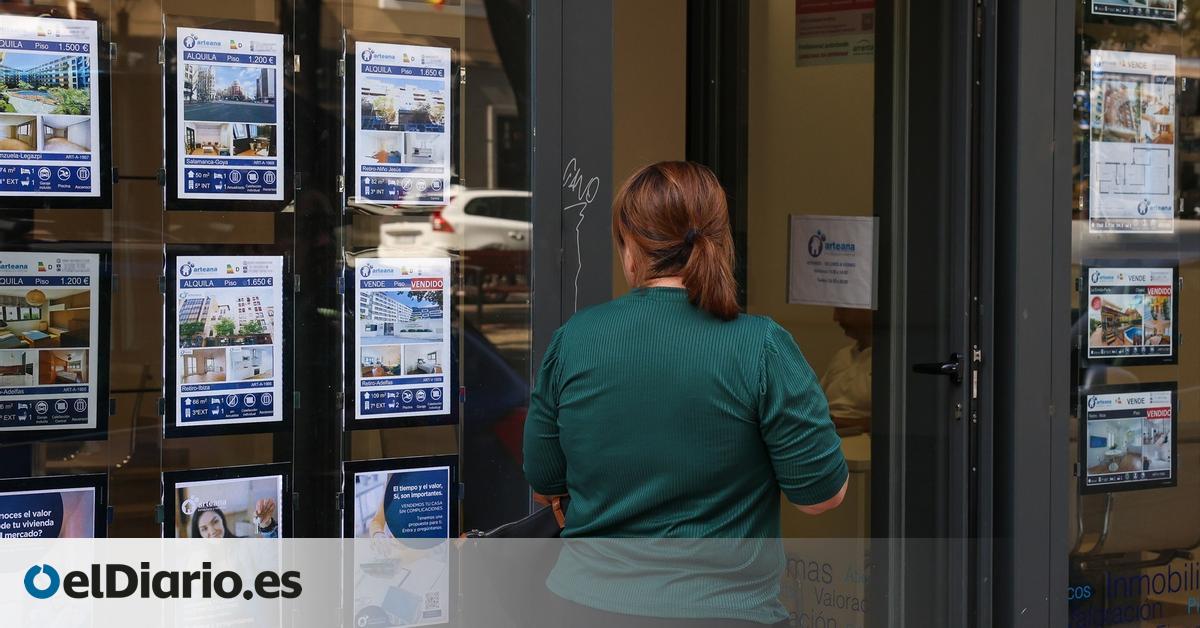
September will be the fifth consecutive month of reductions in the payments of variable interest rate mortgages that are revised annually (a large part of those contracted in our country). Exactly, the reduction of the Euribor represents a saving of 620 euros per year for every 100,000 euros of mortgage. Almost 52 euros each month.
For a standard loan of 150,000 euros over 25 years, with an interest rate composed of the Euribor plus a spread of one percentage point, the reduction is 930 euros per year. 77 euros in each monthly instalment.
The benchmark rate for most mortgages fell to 3.166% on average in August, a low since October 2022. Since the July figure (3.526%), the decline is the largest in 15 years. In August 2023, the Euribor closed at an average of 4.073%. The drop since then is the sharpest in 11 years, almost a percentage point at a time. From April to July, the declines had been much more timid.
“It should be remembered that the reviews [de las hipotecas] “These are made in relation to the data from the same month of the previous year, and the August installment and probably the rest of the months from now on, until December, will be the ones that will experience the biggest reduction, because the Euribor, at that time, exceeded 4%,” explain the experts from Asufin (Association of Financial Users). Those who review their loans every six months will also enjoy a saving of around 28 euros per month.
The mortgage index has experienced a historic rise from 0% in 2022 as a result of the increases in official interest rates that the European Central Bank (ECB) began to implement in July of that year to combat inflation. In June of this year, 2024, the institution decided to begin to reverse this cycle of monetary austerity after bringing the ‘price’ of money in the eurozone to 4.5%. The first rate cut of 0.25 points (to 4.25%) had already been anticipated by the Euribor, as can be seen in the graph of this information.
At the moment, the benchmark lending index, which depends on banks, continues to project further reductions in ECB interest rates. In its daily quote it has already dipped below 3.1%. “With inflation contained, [en agosto las subidas de precios se moderaron al 2,2% en el conjunto de la eurozona, cerca del objetivo teórico de los bancos centrales]the monetary institution is expected to continue relaxing its monetary policy in the coming months, which should prolong positive trends in credit,” says José Félix Izquierdo, economist at BBVA Research, in a recently published article.
“This drop is good news for the mortgage market, which could start to pick up again from September onwards. [las hipotecas nuevas son más baratas ahora que en los últimos meses] and it is also good news for citizens who have a variable mortgage, who will see their mortgage payments go down in the next review,” adds Simone Colombelli, analyst and advisor of the iAhorro comparison site, in the same vein.
The trend is relevant because we must remember that in our country 70% of mortgages are variable, and that changes to fixed-rate loans have been very complicated in this inflation crisis due to the opacity of the banks and the lack of competition, as has been admitted by everyone from the Minister of Economy, Carlos Cuerpo, to (indirectly) the Vice President of the ECB, Luis de Guindos.
The ECB’s monetary austerity has indeed been felt in the pockets of mortgage-ridden families and in the granting of mortgages, which have continued to decline sharply month after month since 2023. But this contraction in credit does not mean that there has been no demand for housing. The only demand that has been stifled is that of families with lower incomes, trapped in many cases in an equally prohibitive rental market.
In fact, the consequences of the ECB’s strategy to contain inflation are still very significant for families with mortgages. For every 100,000 euros of variable interest rate loans, the increase in prices from 2022 is around 2,000 euros per year despite the latest reductions. According to the latest Household Budget Survey (EPF), with data from 2023, the fifth poorest household in our country spends 41% of its total expenditure on housing, including utilities and calculating a “rent imputed to the home in which the household resides when it is the owner or has leased it”.
This was basically the strategy of the central banks: to make financing more expensive in general in order to stifle the purchasing power of households and also the ability of companies to invest and thus force inflation to moderate. This strategy carries the risk of pushing the economy into recession, which has already happened in Germany, while other countries in the eurozone have experienced stagnation. Spain is a positive exception in this context.
This month, the ECB is expected to lower official interest rates again (its governing council meets on 12 September), after the first cut in June and then on hold in July. The key is that the Federal Reserve (the Fed, the US central bank) has confirmed that it will also begin to lower the ‘price’ of money, because inflation is under control “on a sustainable path back to 2%”.
Source: www.eldiario.es

